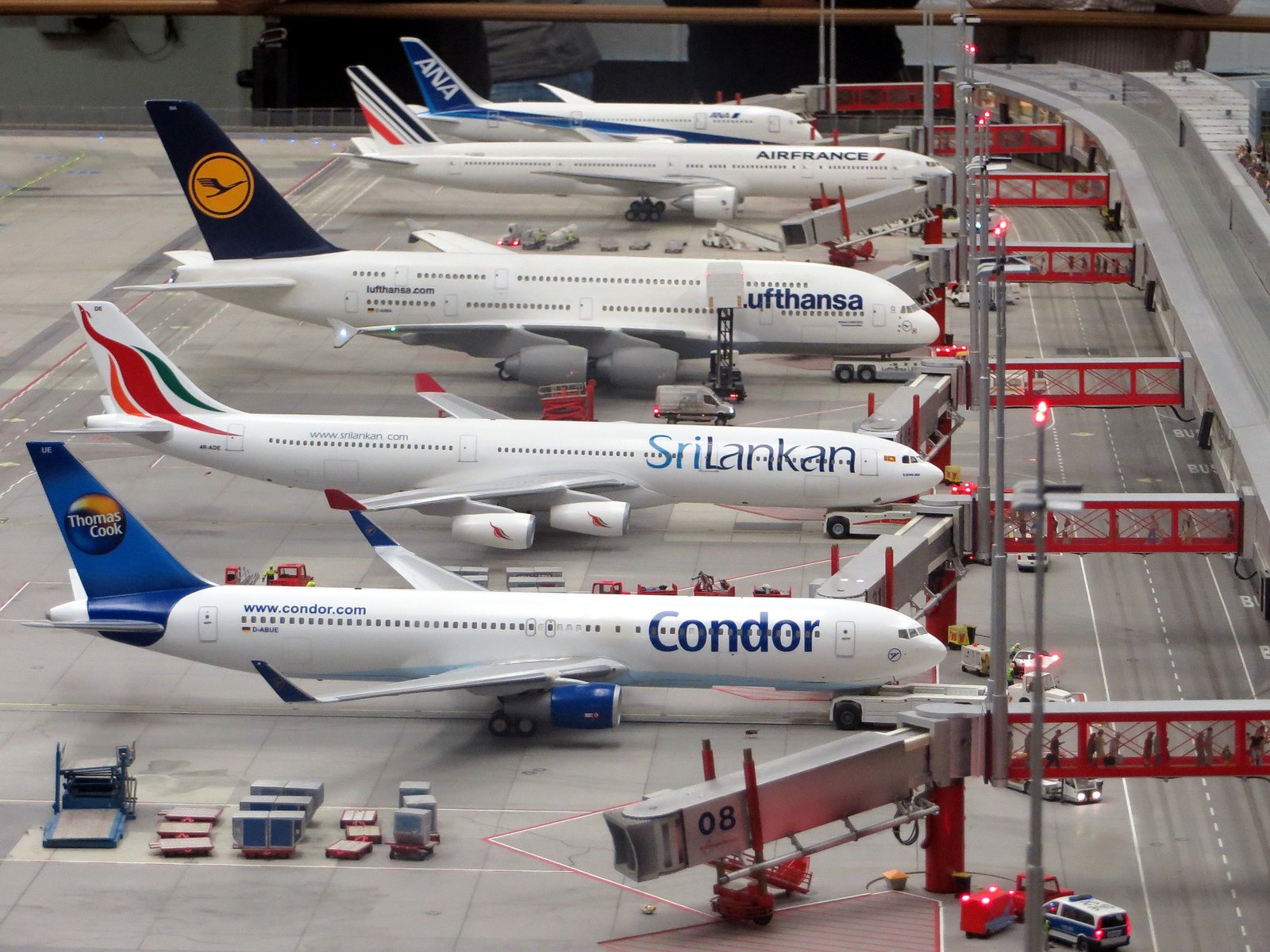We’ve all been there: nervously sitting at our departure gate, hoping that, despite all odds, an aircraft will arrive to take you wherever you’re going. Then, you hear the crushing news that due to weather or mechanical problems, the plane that you’re supposed to leave on never made it to your airport. Sometimes, the airline is able to use backup planes, often by bringing in a plane from somewhere else, but often your flight gets canceled and you get bumped to a flight that leaves some other time, maybe even as late as the next day.
But is the problem avoidable? Just how many backup airplanes do airlines have?
Having extra planes around would mean less canceled or delayed flights. In many instances, the crew is already at the airport, they just need an airplane to fly.
The specific numbers are not public information. What we do have comes from a single response to someone asking almost the same question I am now.
U.S. Airways replied in 2012 that, while the number fluctuates, around 13 planes are kept in reserve. That’s not a whole lot, especially given that the Bureau of Transportation Statistics reports that in 2016, 1.17 percent of domestic flights were canceled, and 18.6 percent of flights did not arrive on time. Given that there were, on average, 42,700 daily flights in the U.S., around 8,440 flights are disrupted on a given day.
Consequently, in order to have “enough” backup planes to prevent delays or cancellations, airlines would have to keep somewhere around eight thousand planes in reserve. That’s a lot of planes. Given that each plane costs upwards of 200 million dollars to purchase outright, or between 200,000 and 1.2 million a month to lease, keeping eight thousand planes in reserve would cost between 1.6 and 9.6 billion dollars, every month. Annually, the airlines would be spending between 20 and 115 billion dollars on planes that weren’t generating any additional revenue, since they’re just replacing planes that would have otherwise been used. And that’s before factoring in the additional crew, fuel, and maintenance costs.
So, the primary reason that there aren’t more backup planes is that planes are expensive. Since airlines are often public companies and have an obligation to maximize profit, they can’t have a number of potential profit-generating machines sitting around, waiting, even if it would improve the end-user experience.
But, there’s a second reason for it: the entire airline is your backup plane.
It’s important to remember that airlines operate on a hub system. There’s not enough demand for a Portland, Maine to Albuquerque, New Mexico daily flight, but there’s enough demand to justify a Portland to New York flight, and a Phoenix to Albuquerque flight. The only missing piece is the connecting flight or flights between New York and Phoenix.
The system functions by moving most passengers between hubs. Lots of people with different ending destinations are likely to be on the same flight because the flights that connect them to their final destination leave from the same hub.
So, if you run an airline, and don’t want to pay for backup planes, what do you do?
One possible method is to increase the number of flights that you run between your hubs so that many flights will have extra seats available. You then set up your network so that you have many flights running to the same hub with different intermediary stops. You might, say, have one direct flight from New York to Dallas that leaves at 1 PM, a flight that goes from New York to Chicago, and then on to Dallas that leaves at 3, and another that heads to Dallas via Atlanta at 5.
If the direct flight is canceled, you can still get your passengers to their final destination, as long as you’ve made sure that you provide more flights than the preexisting demand would warrant.
It’s a decent solution to a complicated problem. You don’t have to pay for expensive airplanes to sit empty, and you don’t even have to correctly predict where your weather and mechanical problems will be. You just have to have enough empty seats that eventually end up in the final destination to make sure that the passengers from the canceled flight can be reasonably reaccommodated.
Only, there’s one big problem. You don’t want to have any empty seats.
While airlines are notoriously tight-lipped about the specific numbers at which they break even, the economic principle is simple. If you can get a plane 80% full, you’ll make more money than if you only sell 50% of the seats. In a dream world, every seat is full, and there’s no additional demand for seats beyond those that have already been sold. In this world, no one needs backup planes.
So, what happens on a day where you’ve built extra seats into your major routes to deal with emergencies, but there are no weather delays, mechanical problems, or crew illnesses. After all, those things are the exception instead of the rule.
Well, you might cancel some flights, then, and say that it was weather, or mechanical, or crew-related. After all, you save money on crew and fuel when you don’t run that extra flight, and the flights that you transfer the extra passengers onto are more cost-efficient.
Now, I’m not saying that this is happening. But in an industry where more than 1% of flights are canceled, and more than 18% are delayed, it’s certainly possible, given that there is an economic incentive to do so. The airlines wouldn’t have to spuriously cancel massive numbers of flights, just enough to make a better-than-average day look more like an average day. I can’t say for sure that it is happening. I can’t say that it isn’t either.
The kind of data that would be required to answer this question isn’t publicly available, so I’ll have to leave this question somewhat answered. But next time I’m booked on a flight that gets canceled, I’ll have to wonder: am I being told the truth about why my flight isn’t on time?
If you enjoyed this article, you should check out these:
How Rich are Today’s Rich?
Is Facebook Dying?
Why Can’t we Stop the Flu?




That information seems like it should be made more public, although it makes sense why they would be tight-lipped.
For those who were wondering if it was 13 planes per airport, or 13 planes total (like I was): the context of the quote implies that there are 13 planes total for that airline across their whole network, it even names the models.
There are some spurious things that airlines seem to do in order to get more cash, and I don’t know that I am a fan of them. This one seems a little more benign than over-booking, but they come down to the same bottom line at the end of the day. I can understand why someone who was obsessed with money and/or efficiency would make these choices; these choices still seem very morally… ambiguous, though.